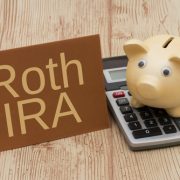A Brief Beginner’s Guide to Self-Directed IRAs
Not familiar with the concept of Self-Directed IRAs? Don’t fret. While the topic might sound complicated from the outside looking in, it’s actually much simpler to get started than you think. We’ve put together this brief guide to help familiarize you with Self-Directed IRAs, how they work, and why so many investors like using them for their retirement plans.
What is a Self-Directed IRA and who can open one?
A Self-Directed IRA is a retirement account that allows the account holder to make their own investment decisions. The account holder can choose to invest in a wide range of assets, including stocks, bonds, real estate, and more. Self-Directed IRAs are available to anyone who meets the requirements to open a traditional or Roth IRA. However, there are some additional rules and regulations that account holders must follow. For example, account holders are not allowed to use the money in their Self-Directed IRA to purchase collectibles or life insurance policies.
Additionally, account holders must make sure that they do not engage in any “prohibited transactions” with their IRA funds. Prohibited transactions include using the IRA funds for personal gain, borrowing money from the IRA, and selling property to the IRA. Violating these rules can result in severe penalties, including losing the tax-advantaged status of the account.
What are the benefits of investing in a Self-Directed IRA account, and how can it help you reach your retirement goals?
A Self-Directed IRA account offers investors a greater degree of control over their retirement savings. Unlike the traditional approaches to IRA accounts, which are managed by brokerages, for example, a Self-Directed IRA gives the investor the ability to choose and invest in a wider range of assets. Some of the most popular options for Self-Directed IRA investments include real estate, private equity, and precious metals. In order to open a Self-Directed IRA account, you will need to work with a financial institution that offers this type of account.
Once you have opened your account, you will be able to fund it. You can do this with contributions from your paychecks or other sources of income. Then, you will be able to direct how your money is invested. You will also be able to monitor the performance of your investments on an ongoing basis. A Self-Directed IRA can offer investors a flexible way to save for retirement. It can provide the opportunity to generate a higher return on investment than what is possible with a traditional IRA account, depending on the investment choices you make.
How do you invest in a Self-Directed IRA account and what are some of the options available to you?
The process of opening and funding a Self-Directed IRA is similar to opening any other IRA. You can open an account with any financial institution that offers IRAs, and you can fund your account with cash or roll over funds from another retirement account. Once your account is established, you can start investing in the assets of your choice. Of course, you will need to research the risks and potential rewards of any investment before you put your money into it. But with a Self-Directed IRA, you have the freedom to choose the investments that best fit your financial goals.
These three keys should help introduce you to the concept of Self-Directed IRA investing. However, the journey doesn’t have to end there. We encourage you to keep reading here at our blog—or, if you’re ready to learn more, you can give us a call at 866-7500-IRA. Here at American IRA, Self-Directed IRAs are what we do—and we know them inside and out. Be sure to reach out to us if you’re considering a Self-Directed IRA.
in search of a guide for your next steps? Visit: How to Guide Your Own Retirement Portfolio | American IRA






